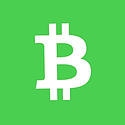Between the government’s two primary inflation measures, the Federal Reserve’s preferred measure is showing far less promise of rising to the central bank’s goal.
The core index of the personal consumption expenditures gauge is now lagging its more popular counterpart, the consumer price index, by the most since the recession ended in June 2009.
The core PCE gauge, which excludes volatile food and energy costs, increased 1.2 percent in April from a year earlier, marking the smallest 12-month gain since February 2014, Commerce Department figures showed Monday. The corresponding CPI measure rose 1.8 percent in April from the same time in 2014. The resulting 0.6 percentage-point difference is the biggest in almost six years:
The widening spread between these two core measures makes it trickier to gauge whether the Fed officials can be “reasonably confident” — a phrase from their statement — that inflation has enough upward momentum for them to raise interest rates this year. Most economists still expect the central bank to announce in September the first increase in the benchmark interest rate since 2006, according to Bloomberg survey data.
While Fed officials track the headline PCE gauge to judge how far inflation remains from meeting their 2 percent goal, the core measure has been helpful in determining underlying price pressures since the plunge in energy costs in the second half of last year weighed heavily on both the PCE and CPI. Fed Chair Janet Yellen has said that while inflation at 2 percent (something that hasn’t happened since April 2012) is not a prerequisite for raising the benchmark interest rate, the policy makers want to see prices in an upward trajectory before making the move.
The divergence in the two core measures can be blamed largely on the healthcare figures. While health is typically the most significant share of the core PCE gauge, it makes up less than 10 percent of the core CPI.
The variance in how each index calculates health costs contributes to the wider gap in April. While the CPI covers Americans’ out-of-pocket spending on healthcare, the PCE measure is impacted by congressionally administered costs for Medicare and Medicaid, Paul Ashworth, chief economist at Capital Economics in Toronto, said in a research note last week.
“Over the past few months, the declines in those administered prices have been covering up a sharp pick-up in the price of out-of-pocket medical care,” Ashworth wrote May 28. “The Fed should be wary of putting too much emphasis on the PCE measure of core inflation, particularly at a time when it is being temporarily depressed by declines in government-set prices for health care.”
Medical care costs in April climbed 2.9 percent year-to-year in the CPI index, while the PCE gauge showed a 0.6 percent gain over the same period.
Note: All information on this page is subject to change. The use of this website constitutes acceptance of our user agreement. Please read our privacy policy and legal disclaimer. Opinions expressed at FXstreet.com are those of the individual authors and do not necessarily represent the opinion of FXstreet.com or its management. Risk Disclosure: Trading foreign exchange on margin carries a high level of risk, and may not be suitable for all investors. The high degree of leverage can work against you as well as for you. Before deciding to invest in foreign exchange you should carefully consider your investment objectives, level of experience, and risk appetite. The possibility exists that you could sustain a loss of some or all of your initial investment and therefore you should not invest money that you cannot afford to lose. You should be aware of all the risks associated with foreign exchange trading, and seek advice from an independent financial advisor if you have any doubts.
Recommended Content
Editors’ Picks
AUD/USD extends its upside above 0.6600, eyes on RBA rate decision

The AUD/USD pair extends its upside around 0.6610 during the Asian session on Monday. The downbeat US employment data for April has exerted some selling pressure on the US Dollar across the board. Investors will closely monitor the Reserve Bank of Australia interest rate decision on Tuesday.
EUR/USD: Optimism prevailed, hurting US Dollar demand

The EUR/USD pair advanced for a third consecutive week, accumulating a measly 160 pips in that period. The pair trades around 1.0760 ahead of the close after tumultuous headlines failed to trigger a clear directional path.
Gold holds below $2,300, Fedspeak eyed

Gold price loses its recovery momentum around $2,295 on Monday during the early Asian session. Investors will keep an eye on Fedspeaks this week, along with the first reading of the US Michigan Consumer Sentiment Index for May on Friday.
Bitcoin Cash could become a Cardano partnerchain as 66% of 11.3K voters say “Aye”

Bitcoin Cash is the current mania in the Cardano ecosystem following a proposal by the network’s executive inviting the public to vote on X, about a possible integration.
Week ahead: BoE and RBA decisions headline a calm week

Bank of England meets on Thursday, unlikely to signal rate cuts. Reserve Bank of Australia could maintain a higher-for-longer stance. Elsewhere, Bank of Japan releases summary of opinions.